

Wild Food Foraging: How to Identify Four Common Edible Plants - Eat Healthy. Foraging for wild food has become more popular as people have become interested in eating fresh, local food—for free!
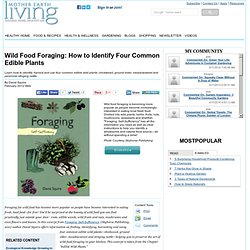
You'd be surprised at the bounty of wild food you can find practically just outside your door: roots, edible weeds, wild fruits and nuts, mushrooms and even flowers and leaves. In this excerpt from Foraging: Self-Sufficiency, (Skyhorse Publishing, 2011) author David Squire offers information on finding, identifying, harvesting and using four common edible wild plants—chickweed, ground elder, meadowsweet and stinging nettle—helping you to preserve the art of wild food foraging in your kitchen. 5 Fun Winter Activities to Get Kids Excited About the Garden - Green Mom, Green Family. Sarah Lozanova is a mother of two, a holistic parenting coach, and a freelance environmental writer.
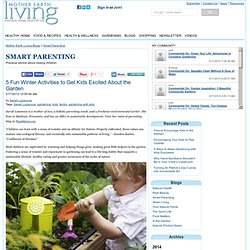
She lives in Madison, Wisconsin, and has an MBA in sustainable development. View her natural parenting blog at RawMama.org. Easy Salad Boxes: Growing Lettuce - Green Gardening. Based in Lake County, Illinois, Heidi Cardenas has been freelancing since 2000.
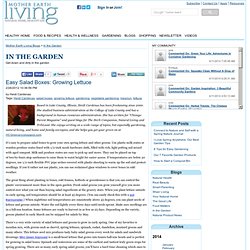
She studied business administration at the College of Lake County and has a background in human resources administration. She has written for "Chicago Parent Magazine" and guest blogs for The Herb Companion, Natural Living and TribLocal. She enjoys writing on a wide range of topics, but especially gardening, natural living, and home and family eco topics, and she helps you get your green on at HCGreenery.blogspot.com. Growing Vegetables from Seed - Eat Healthy. Starting vegetables from seed is a simple way for both novice and experienced gardeners to save money and delve into the exciting (and delicious!)

DIY Block Printing: Homemade Wedding Invitations - Green Living. While store-bought wedding invitations can be lovely, they lack a personal touch and sometimes cost a pretty penny.
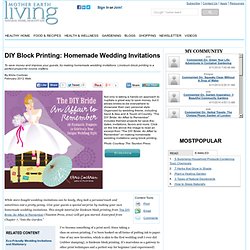
Give your guests a special surprise by making your own homemade wedding invitations. This simple tutorial for linoleum block printing from The DIY Bride: An Affair to Remember (Taunton Press, 2012) will get you started. Meatless Monday! 3 Favorite Sites for Veggie Recipes. Whether we care more about the environment or animal rights, most conscientious consumers can agree that today's factory farming practices are unhealthy for humans, animals and the planet alike.
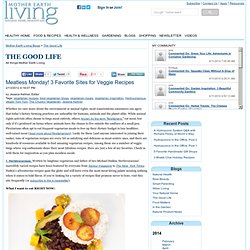
While animal rights activists often choose to forgo meat entirely, others, known by the term "flexitarians," eat meat, but only if it's produced on farms where animals have the chance to live outside the confines of a small pen. Five Resources to Plan a Great Garden. Garden planning time is getting ever closer!

As you prepare to grow food and herbs to improve your health and save some money (not to mention enjoy the most delicious garden goods!) This spring, take advantage of the many resources that can help you grow bigger, better fruits and vegetables. 1. The Health Benefits of Kale - Food Matters. How does energy conservation help save the environment. Energy use by humans has huge negative impacts on the environment: - When we burn fossil fuels like coal, natural gas, and oil, we release carbon dioxide (CO2) into the atmosphere.

CO2 is a greenhouse gas, which means that it traps heat from the sun inside the earth's atmosphere. Ever increasing levels of greenhouse gases over the last two hundred years have resulted in a steady warming of the climate. This climate change is already wiping out species, and scientists predict that between 10% and 50% of animal species worldwide could be wiped out by climate change within 50 years.
Climate change is also causing massive melting of glaciers and polar ice caps, which could cause sea levels to rise by several meters, so places like Florida and New York City will be half under water. As well climate change is shifting rainfall patterns, which are already causing increased flooding in some areas, and increased drought in others. Some forms of energy are less harmful. The Environmental Impact of Protein Sources - Food Matters. We’ve all heard that eating less meat is a great way to reduce our environmental impact by cutting carbon emissions.

On average, it takes more than 11 times as much energy to produce one calorie of animal protein as it does to create one calorie of plant protein. The meat and dairy industries require large amounts of pesticides, chemical fertilizers, fuel, animal feed and water to operate, and in return they produce large amounts of greenhouse gases and toxic manure that pollutes our waterways. Worldwide meat consumption has more than doubled in the past 60 years, with global meat production reaching 600 billion pounds in the last few years. Growing a Lemon Tree at Home. Scarlet Faith has always grown gardens since she was a little girl and lived in a kind of garden suburbs.

Skin Benefits of Comfrey. I’m always searching for great herbs to color our soap and skin care products with. Recently I’ve discovered a plant that not only provides a beautiful green color but also provides wonderful skin benefits. Today, I’m going to tell you a little bit about comfrey. Comfrey is a plant that isn’t given much attention, most likely due to the potential for liver toxicity if ingested. It is frequently used as a fertilizer/compost tea and mulch because of its intense nitrogen content. As an herbal remedy, it has wonderful benefits for the skin. Why Soap? Soap..one of the most frequently used products in our daily lives yet few stop to think what is in that soap we use on our skin.
5 Health Benefits of Pears - Natural Health. Soft and sweet, pears are a treat in themselves. Once called the “gift of the gods” by Homer, author of the Odyessy, pears are packed with nutrients, fiber and antioxidants, making them a delicious but healthful snacking choice. Check out these five health benefits of pears for more good reasons to indulge in this sweet fruit. Health Benefits of Pears Fight Free Radicals Pears are naturally high in vitamins C and K, as well as nutrients such as copper—all of which act as antioxidants to protect our cells from damage from free radicals. Suitcase Crafts: 4 Ways to Repurpose Old Luggage - Green Decor and Design. At Natural Home & Garden, we love the idea of repurposing old items to create new things. Repurposing might involve an investment of time (and creativity) on your part, but ultimately it can save not only resources but the energy it takes to make new products—not to mention money, too.
Old luggage has a certain whimsy and worldly charm that can enhance any home’s décor—and the possibilities for using them are endless! Natural Cleaning Recipes with Essential Oils - Green Living. Related Content The Path to Herbalism The art of healing our bodies with herbs is a new fascination in Erin McIntosh's life. Learn more ab... Natural Remedies for Ear Infections - Natural Health. Although ear infections are most common in children, ear infections can occur at any stage of life. There are two types: otitis externa, more commonly known as swimmer’s ear; and otitis media, or an infection of the middle ear, which is most common in children.
Swimmer’s ear is caused when water or another substance gets trapped in the ear canal, creating a breeding ground for bacteria. Otitis media, or middle ear infections, are usually a result of allergies or a bacterial or viral upper respiratory infection. Untitled. 7 Eco-Friendly and Recycled Garden Products - Green Homes. Eating with the Seasons - Eat Healthy. Beauty Ingredient: What Helps Chapped Lips? Making Quick Moulds for soap. Sometimes, you may have a soap idea, but can’t find a commercial mould that fits your need, or you just want to create something silly or personal. Make your own laundry detergent. Making your own laundry detergent is not only a fun and easy craft, but it’s also good for the environment and it saves money versus buying costly name brand laundry detergents. Following is a simple recipe for making your own detergent at home. 5 Reasons Why Natural Handmade Soaps are Better than Commercial - The Indie Beauty Business Community. Is Antibacterial Soap Really Necessary?
I recently came across a new website, The site’s primary focus is to alleviate concern about the safety and effectiveness of antibacterial soaps. While I’m unimpressed with the new Fight Germs Now web site, I’d like to scream from the rooftops, “Antibacterial soaps aren’t necessary!” Naturally Clean: Make Your Own Washable Swiffer. Every Herb Has a Story: Treat Coronary Heart Disease with Hawthorn.
Natural Remedies for Runny Noses: Herbal Steams. How to make an avocado hair mask. How to make a banana facial. Bees, bath and beyond. How to make compost tea. How to make seed paper. How to make sunburn soother. How to make hairspray. How to make carpet deodorizer. How to avoid spoilage. How to keep your garden wasp free. Oceans cannot digest plastic bags. What home cleaning products do you use? Don't be scared to green your Halloween. A regular family goes green.
Make non-toxic candles. Dry cleaning dirties the planet. Does eco-friendly hair dye exist? FAQs about recycling. FAQs about composting. Seasonal eats. Stop the spread of invasive plants. FAQs about green cleaning. Green cleaning recipes. Companies won't disclose parfum ingredients. Can small steps add up to big change? Protect yourself against sun and bugs.
Holistically Haute: Got Pain? Here Are 7 Holistic Ways to Reduce it. {Green Living} Eco-Friendly Tips for Painting Your House. {Eco-inspirations}WHAT IS TIME BANKING ? {Green Living} 10 Surprising Uses For Baking Soda. Make your own recycled seed paper. Help wildlife babies stay wild. Plantable seed paper. How to ask your neighbours to stop spraying pesticides.